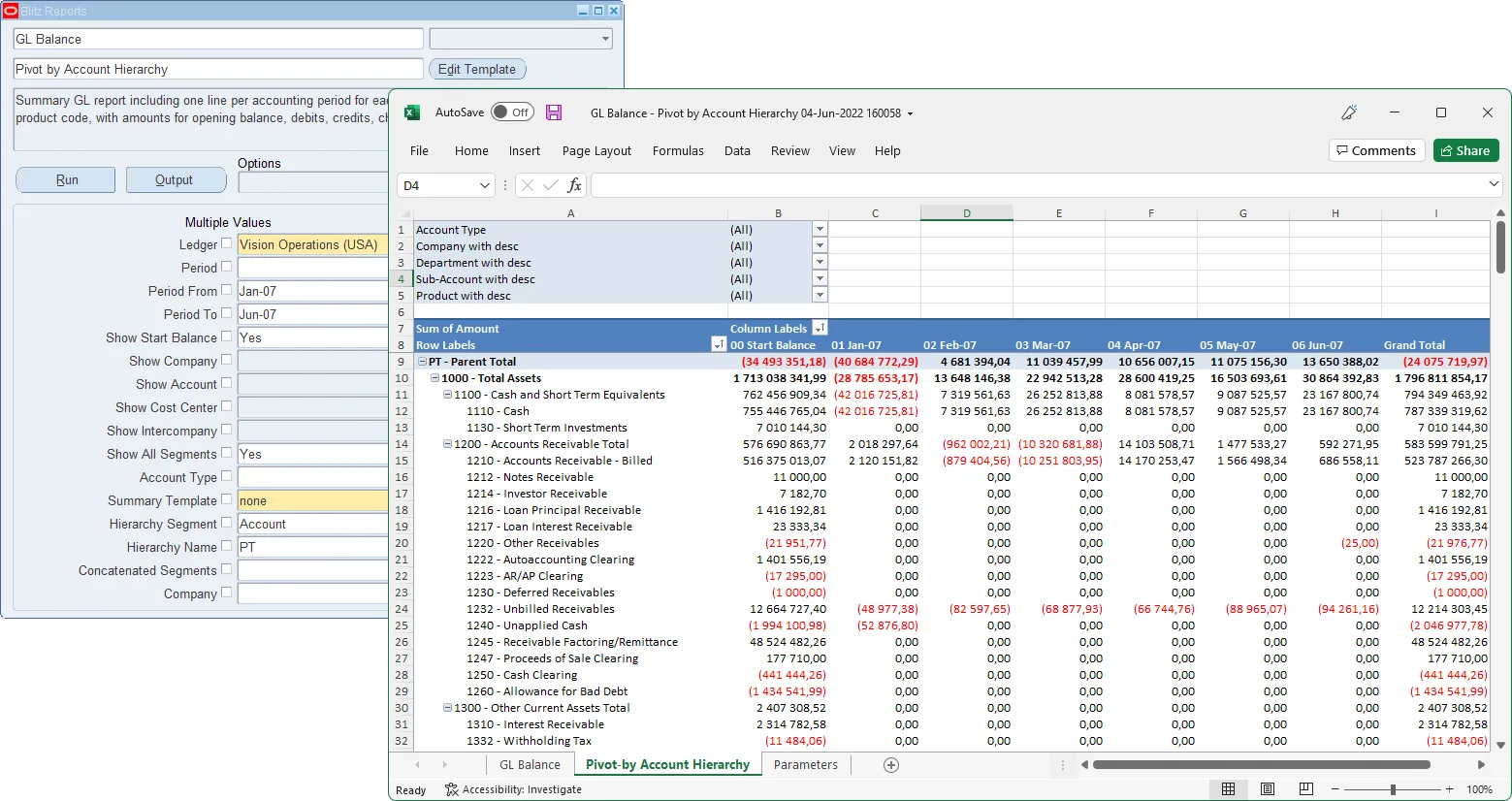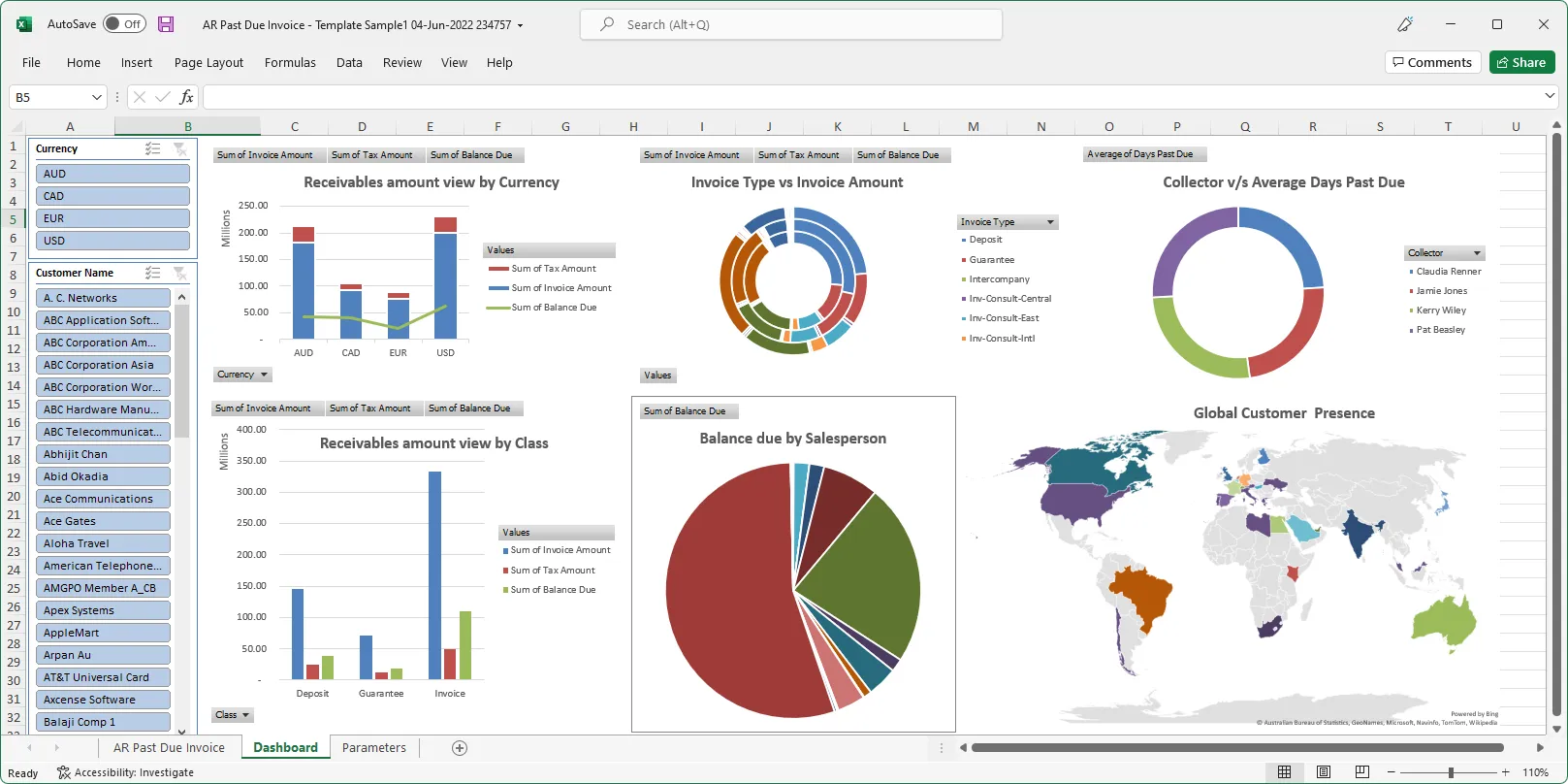Oracle-EBS-SQL
Library of Oracle EBS SQLs for operational Excel and ECC reporting, Discoverer replacement, Oracle EBS performance tuning and rapid report development.
CAC Calculate ICP PII Item Costs by Where Used
Description:
Report to identify the intercompany “To Org” profit in inventory (also known as PII or ICP) for each inventory organization and item. Gets the PII item costs by joining the sourcing rule information from the first “hop” from the sourcing rule information to the second “hop”. In addition, if an item has a source org in the item master, but the sourcing rule does not exist, this item relationship will still be reported. This report also assumes that the first hop may have profit in inventory from another source organization and will not include any profit in inventory from the source org for the “To Org” profit in inventory calculations. Likewise for the “To Org”, any this level material overheads, resources, outside processing or overhead costs are ignored for the profit in inventory calculations. In addition, inactive items and disabled organizations are ignored. And while calculating the profit in inventory item costs, this report also shows where these components are being used on the To Org bills of material.
Parameters: Assignment Set: the set of sourcing rules to use with calculating the PII item costs (mandatory). From (Source) Organization: the source organization where the goods come from (optional). To Organization: the organization where the goods are being shipped to (optional). Cost Type: the cost type to use for the item costs, such as Frozen or Pending (mandatory). PII Cost Type: the profit in inventory cost type you wish to report (mandatory). PII Sub-Element: the sub-element or resource for profit in inventory, such as PII or ICP (mandatory). Currency Conversion Date: the exchange rate conversion date that was used to set the standard costs (mandatory). Currency Conversion Type: the exchange rate conversion type that was used to set the standard costs (mandatory). Period Name: the accounting period you wish to report for; this value does not change any PII or item costs, it is merely a reference value for reporting purposes (mandatory). Include Transfers to Same OU: allows you to include or exclude transfers within the same Operating Unit (OU). Defaulted to not include these internal transfers. Include Expense Items: enter Yes or No to indicate if you want to include expense items on the bills of material (mandatory). Defaulted to No. Include Uncosted Items: enter Yes or No to indicate if you want to include uncosted items on the bills of material (mandatory). Defaulted to No. Category Set 1: any item category you wish, typically the Cost or Product Line category set (optional). Category Set 2: any item category you wish, typically the Inventory category set (optional). Component Number: enter the specific component(s) you wish to report (optional). Assembly Number: enter the specific assembly or assemblies you wish to report (optional). Include Unimplemented ECOs: enter Yes or No to indicate if you want to include engineering changes which have not been implemented (mandatory). Operating Unit: enter the specific operating unit(s) you wish to report (optional). Ledger: enter the specific ledger(s) you wish to report (optional).
Hidden Parameters: Numeric Sign for PII: to set the sign of the profit in inventory amounts. This parameter determines if PII is normally entered as a positive or negative amount (mandatory).
| – | Copyright 2018 - 2024 Douglas Volz Consulting, Inc., all rights reserved. |
|---|---|
| – | Permission to use this code is granted provided the original author is acknowledged. No warranties, express or otherwise is included in this permission. |
| – | Version Modified on Modified by Description |
| – | ======= =========== ============== ========================================= |
| – | 1.6 29 Jan 2024 Doug Volz Remove tabs, add org access controls, fix for G/L Daily Rates, |
| – | Make three parameters non-hidden: Include Transfers to Same OU, Include Expense Items and Include Uncosted Items. |
Parameters
Assignment Set, From (Source) Organization, To Organization, Cost Type, PII Cost Type, PII Sub-Element, Currency Conversion Date, Currency Conversion Type, Period Name, Include Transfers to Same OU, Include Uncosted Items, Include Expense Items, Category Set 1, Category Set 2, Category Set 3, Component Number, Assembly Number, Include Unimplemented ECOs, Operating Unit, Ledger
Used tables
mtl_onhand_quantities_detail, mtl_units_of_measure_vl, mtl_item_status_vl, mfg_lookups, fnd_common_lookups, mtl_parameters, mtl_system_items_vl, bom_structures_b, hr_organization_information, hr_all_organization_units_vl, gl_ledgers, bom_components_b, org_access_view, mtl_item_revisions_b, mrp_sr_source_org, mrp_sr_receipt_org, mrp_sourcing_rules, mrp_sr_assignments, mrp_assignment_sets
Categories
Dependencies
If you would like to try one of these Oracle EBS SQLs without having Blitz Report installed, note that some of the reports require functions from utility package xxen_util.
Example Report
CAC Calculate ICP PII Item Costs by Where Used 20-May-2023 Vision 021803.xlsx
Report SQL
www.enginatics.com/reports/cac-calculate-icp-pii-item-costs-by-where-used/
Blitz Report™ import options
CAC_Calculate_ICP_PII_Item_Costs_by_Where_Used.xml
Oracle E-Business Suite Reporting Library
We provide an open source Oracle EBS SQLs as a part of operational and project implementation support toolkits for rapid Excel reports generation.
Blitz Report™ is based on Oracle EBS forms technology, and hence requires minimal training. There are no data or performance limitations since the output files are created directly from the database without going through intermediate file formats such as XML.
Blitz Report can be used as BI Publisher and Oracle Discoverer replacement tool. Standard Oracle BI Publisher and Discoverer reports can also be imported into Blitz Report for immediate output to Excel. Typically, reports can be created and version tracked within hours instead of days. The concurrent request output automatically opens upon completion without the need for re-formatting.
The Filters, Columns, Rows and Values fields are used to create and deliver the data in pivot table format with full drill down to details.

The Excel template upload functionality in Blitz Report allows users to create their own layouts by uploading an Excel template with additional sheets and charts, automatically refreshed when the report runs again. This allows to create custom dashboards and more advanced visualizations of report data.

You can download and use Blitz Report free of charge for your first 30 reports.
The installation and implementation process usually takes less than 1 hour; you can refer to our installation and user guides for specific details.
If you would like to optimize your Oracle EBS implementation and or operational reporting you can visit www.enginatics.com to review great ideas and example usage in blog. Or why not try for yourself in our demo environment.
Useful Links
Blitz Report™ – World’s fastest data upload and reporting for Oracle EBS
Oracle Discoverer replacement – importing worksheets into Blitz Report™
Blitz Report™ Questions & Answers
Supply Chain Hub by Blitz Report™
© 2025 Enginatics